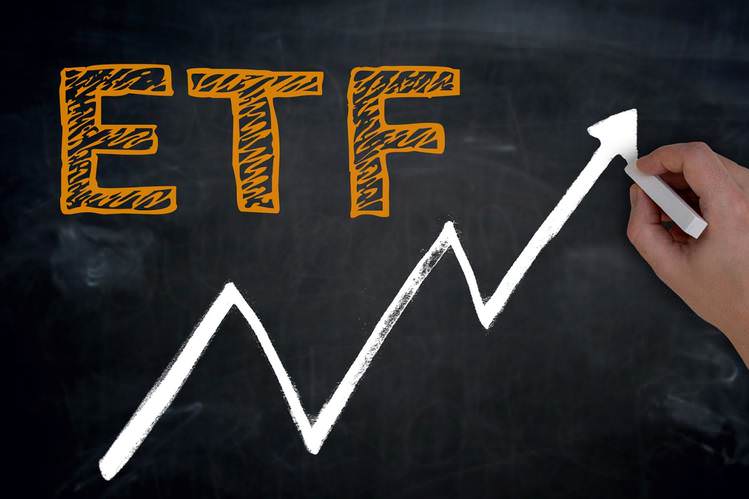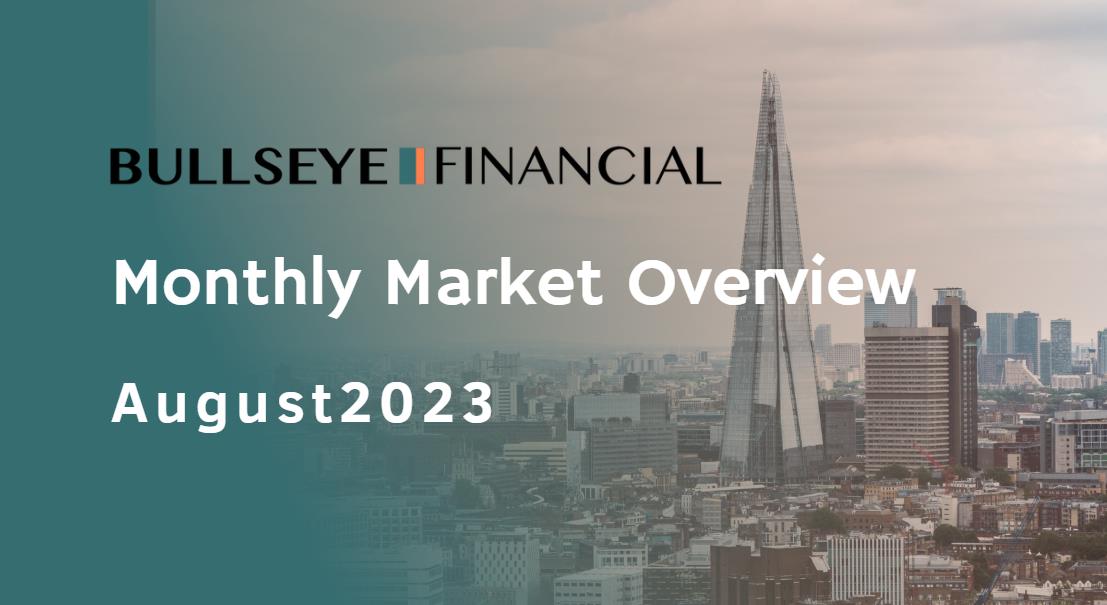A Fund And an ETF, What Are They?
May 10 2021
| Tags: Bullseye Research, ETF
A fund is an investment that pools together the money from many individuals. Fund managers then use it to invest in a wide range of shares and/or bonds. The most valued advantage of a fund investment is the diversification effect it can bring to the portfolio; however, its main drawback is the T+1 or T+2 settlement which limits its liquidity.
ETFs are funds traded on a stock exchange, and therefore more liquid compared to a fund. Most ETFs aim to track the performance of a particular index of stocks, bonds or other assets and often have low management costs.
As most ETFs were designed to track certain assets, there are all sorts of ETFs in the market, depending on which assets they are tracking. For example, SPY, one of the most popular ETFs which tracks the S&P 500 index, and GLD, frequently grabbing headlines recently, tracks the performance of gold.
The feature of ETFs provides a solution to my indecisive classmate – instead of picking individual stocks, he can simply invest in an ETF. The ETF will provide him equivalent benefit of putting all the stocks in a basket and buying them all. My classmate’s hypothetic basket, I am assuming, would cover his favourite high-tech industry and include both outperformers and underperformers, balancing each other out, providing a return that is in line with the average high-tech industry.
Another bunch of people who would benefit from the feature of ETFs are people who want to participate in the performance of certain assets but do not want to (or cannot) physically own them. For example, an investor who is bullish on crude oil can simply invest in an ETF that tracks the performance of the black gold rather than physically buying a barrel and storing it in her backyard (which is also not allowed).
So Far So Good, How About the Risk?
To understand the risk of ETF investment, we need to further explore how ETFs work. Let’s assume on 20 August 2020, we were looking to invest in an ETF named “FAANG” which as the name suggested, included 5 stocks – Facebook, Amazon, Apple, Netflix and Google.
FAANG was created on 1 June 2020 with an Asset Under Management (AUM) of $1 million and issued 1 million units so each unit at initiation was worth $1. FAANG allocated equally to the 5 shares. Theoretically, the Net Asset Value (NAV) of FAANG on 20 August 2020 should be $1.25 million, namely $1.25 per unit due to the appreciation of the 5 shares as illustrated in the table below.
 However, in reality the NAV might be different from our theoretical number because remember, the ETF itself is being traded on the market. As a result, the NAV will not only be impacted by the 5 underlying assets, but also by the demand and supply of the ETF itself. When more people are buying FAANG, the price will go up and FAANG is trading at a premium (price of FAANG higher than the valuation of the 5 shares), and when more people are selling FAANG, the price will go down and FAANG is trading at a discount.
To prevent the NAV of FAANG from far deviating from the valuation of the underlying assets (in our example, $1.25 million), the Authorised Participants (APs) will be in the market, in charge of the creations and redemptions of shares. When FAANG is trading at a premium, APs will create more shares, increasing supply and bringing price of FAANG close to the valuation of the 5 shares and vice versa. The APs are normally the big banks, and they can make an arbitrage profit by making the market. However, the APs do not have legal obligation to create or redeem the ETF’s shares. The main risk of investing in an ETF, therefore, is in times of market stress, APs may scale back or even step away entirely, leaving the NAV of ETFs far deviated from the valuation of the underlying assets.
Investment Strategy Using ETFs
Nowadays, most investment management companies consider ETFs as an important component to their portfolios. For example, Bridgewater increased holdings of SPY to 26.1% and GLD to 15.3% in their portfolio. Warren Buffett’s Berkshire Hathaway also added index tracking ETFs VOO and SPY to the portfolio in Q1 2020. By adding ETFs to the portfolio, wider exposures as well as better diversifications are achieved without a high cost.
KPC portfolio management team uses ETFs as one of the tools for establishing the most appropriate investment strategy for our clients. One of the investment strategies is “Core-Satellite”, with the core portfolio including ETFs of selected industries and satellite portfolio covering high growth shares with great potential in price appreciation. The time horizon for the core portfolio is mid to long term while that for the satellite portfolio is short to mid-term. This strategy gives stability, diversification as well as growth to our client’s portfolio and successfully made over 5% return per month YTD.
However, in reality the NAV might be different from our theoretical number because remember, the ETF itself is being traded on the market. As a result, the NAV will not only be impacted by the 5 underlying assets, but also by the demand and supply of the ETF itself. When more people are buying FAANG, the price will go up and FAANG is trading at a premium (price of FAANG higher than the valuation of the 5 shares), and when more people are selling FAANG, the price will go down and FAANG is trading at a discount.
To prevent the NAV of FAANG from far deviating from the valuation of the underlying assets (in our example, $1.25 million), the Authorised Participants (APs) will be in the market, in charge of the creations and redemptions of shares. When FAANG is trading at a premium, APs will create more shares, increasing supply and bringing price of FAANG close to the valuation of the 5 shares and vice versa. The APs are normally the big banks, and they can make an arbitrage profit by making the market. However, the APs do not have legal obligation to create or redeem the ETF’s shares. The main risk of investing in an ETF, therefore, is in times of market stress, APs may scale back or even step away entirely, leaving the NAV of ETFs far deviated from the valuation of the underlying assets.
Investment Strategy Using ETFs
Nowadays, most investment management companies consider ETFs as an important component to their portfolios. For example, Bridgewater increased holdings of SPY to 26.1% and GLD to 15.3% in their portfolio. Warren Buffett’s Berkshire Hathaway also added index tracking ETFs VOO and SPY to the portfolio in Q1 2020. By adding ETFs to the portfolio, wider exposures as well as better diversifications are achieved without a high cost.
KPC portfolio management team uses ETFs as one of the tools for establishing the most appropriate investment strategy for our clients. One of the investment strategies is “Core-Satellite”, with the core portfolio including ETFs of selected industries and satellite portfolio covering high growth shares with great potential in price appreciation. The time horizon for the core portfolio is mid to long term while that for the satellite portfolio is short to mid-term. This strategy gives stability, diversification as well as growth to our client’s portfolio and successfully made over 5% return per month YTD.
 However, in reality the NAV might be different from our theoretical number because remember, the ETF itself is being traded on the market. As a result, the NAV will not only be impacted by the 5 underlying assets, but also by the demand and supply of the ETF itself. When more people are buying FAANG, the price will go up and FAANG is trading at a premium (price of FAANG higher than the valuation of the 5 shares), and when more people are selling FAANG, the price will go down and FAANG is trading at a discount.
To prevent the NAV of FAANG from far deviating from the valuation of the underlying assets (in our example, $1.25 million), the Authorised Participants (APs) will be in the market, in charge of the creations and redemptions of shares. When FAANG is trading at a premium, APs will create more shares, increasing supply and bringing price of FAANG close to the valuation of the 5 shares and vice versa. The APs are normally the big banks, and they can make an arbitrage profit by making the market. However, the APs do not have legal obligation to create or redeem the ETF’s shares. The main risk of investing in an ETF, therefore, is in times of market stress, APs may scale back or even step away entirely, leaving the NAV of ETFs far deviated from the valuation of the underlying assets.
Investment Strategy Using ETFs
Nowadays, most investment management companies consider ETFs as an important component to their portfolios. For example, Bridgewater increased holdings of SPY to 26.1% and GLD to 15.3% in their portfolio. Warren Buffett’s Berkshire Hathaway also added index tracking ETFs VOO and SPY to the portfolio in Q1 2020. By adding ETFs to the portfolio, wider exposures as well as better diversifications are achieved without a high cost.
KPC portfolio management team uses ETFs as one of the tools for establishing the most appropriate investment strategy for our clients. One of the investment strategies is “Core-Satellite”, with the core portfolio including ETFs of selected industries and satellite portfolio covering high growth shares with great potential in price appreciation. The time horizon for the core portfolio is mid to long term while that for the satellite portfolio is short to mid-term. This strategy gives stability, diversification as well as growth to our client’s portfolio and successfully made over 5% return per month YTD.
However, in reality the NAV might be different from our theoretical number because remember, the ETF itself is being traded on the market. As a result, the NAV will not only be impacted by the 5 underlying assets, but also by the demand and supply of the ETF itself. When more people are buying FAANG, the price will go up and FAANG is trading at a premium (price of FAANG higher than the valuation of the 5 shares), and when more people are selling FAANG, the price will go down and FAANG is trading at a discount.
To prevent the NAV of FAANG from far deviating from the valuation of the underlying assets (in our example, $1.25 million), the Authorised Participants (APs) will be in the market, in charge of the creations and redemptions of shares. When FAANG is trading at a premium, APs will create more shares, increasing supply and bringing price of FAANG close to the valuation of the 5 shares and vice versa. The APs are normally the big banks, and they can make an arbitrage profit by making the market. However, the APs do not have legal obligation to create or redeem the ETF’s shares. The main risk of investing in an ETF, therefore, is in times of market stress, APs may scale back or even step away entirely, leaving the NAV of ETFs far deviated from the valuation of the underlying assets.
Investment Strategy Using ETFs
Nowadays, most investment management companies consider ETFs as an important component to their portfolios. For example, Bridgewater increased holdings of SPY to 26.1% and GLD to 15.3% in their portfolio. Warren Buffett’s Berkshire Hathaway also added index tracking ETFs VOO and SPY to the portfolio in Q1 2020. By adding ETFs to the portfolio, wider exposures as well as better diversifications are achieved without a high cost.
KPC portfolio management team uses ETFs as one of the tools for establishing the most appropriate investment strategy for our clients. One of the investment strategies is “Core-Satellite”, with the core portfolio including ETFs of selected industries and satellite portfolio covering high growth shares with great potential in price appreciation. The time horizon for the core portfolio is mid to long term while that for the satellite portfolio is short to mid-term. This strategy gives stability, diversification as well as growth to our client’s portfolio and successfully made over 5% return per month YTD.
By Dr.Wei Shi (CFA)






